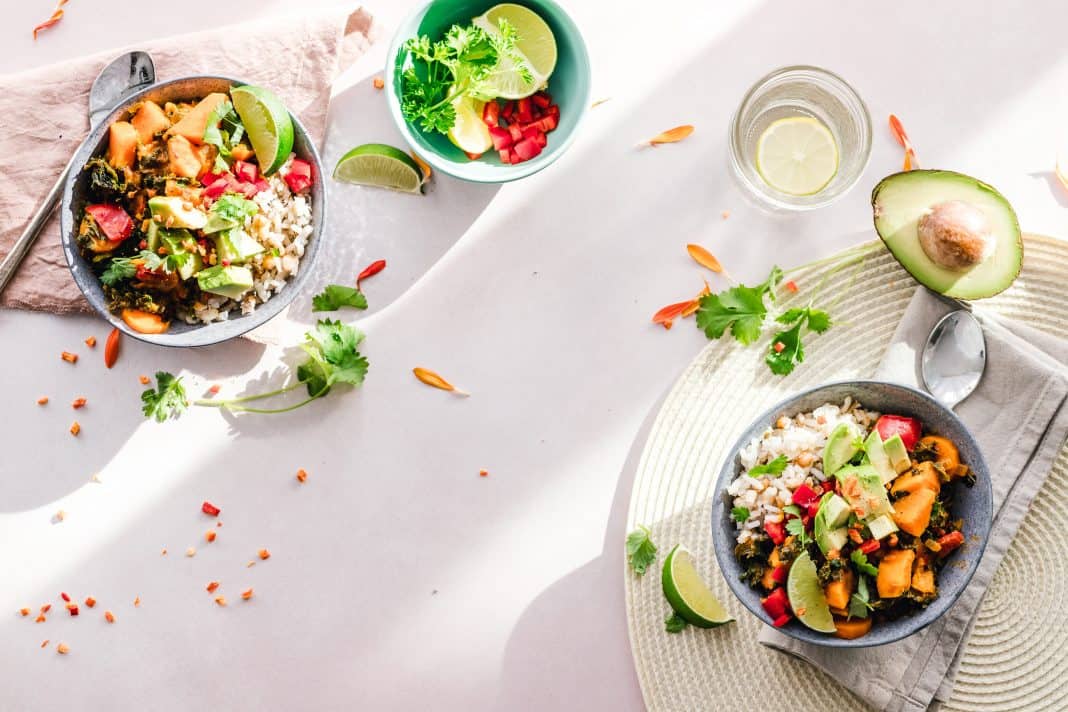Organic, healthy, one-bowl meals have been in vogue for quite some time. Over the years, they’ve gone by a variety of names: hippie bowls, macro bowls, sunshine bowls, and so on. But a recent trend taking off on Pinterest has given these one-dish meals a brand new name (and a fresh twist). Known as Buddha bowls, these most recent incarnations contain a filling mixture of roasted or raw vegetables, a variety of greens, healthy grains, and beans. For added texture and flavor, bowls can also contain seasonings, sauces, nuts, and seeds. Buddha bowls are healthy, tasty options (not to mention easy and quick!) that encourage you to get creative in the kitchen while staying healthy and feeling full.
What’s the Buddha got to do with it?
You might find yourself wondering if there’s a religious connotation associated with this meal. Are they supposed to help you when it comes to meditation? Not really; in fact, the name is a bit of a misnomer. A Buddha bowl is supposed to be so stuffed full of healthy fuel for the body that it resembles the round belly of the Buddha. Except Guatama Buddha, who founded the Buddhist tradition over 2,000 years ago, actually had a more average build. The rotund, smiling Buddha we often see, whose name is Budai Luohan, the Laughing Buddha, was a Chinese monk who lived hundreds of years after Guatama. But no matter what they’re called, there is no denying that Buddha bowls can be life-changing. They are inherently vegetarian or vegan, but the great thing about them is that they are endlessly customizable. You can add any combination of fruit, vegetables, protein, grains, and greens you want to induce a tastebud explosion.
Keep it authentic.
When reaching for the healthy, tasty meal of your dreams, make sure that it’s actually a Buddha bowl. InStyle provides a helpful breakdown of the core contents that shouldn’t change: “For the uninitiated, [Buddha Bowls are] a meal (often vegetarian or vegan) that typically contains 15 percent lean protein, 25 percent whole grains, 35 percent vegetables, 10 percent sauce, and 30 percent extras, like nuts, seeds, or sprouts.” Using that basic formula, a true Buddha bowl will contain all the nutrition you need to get you through the day. That’s why they make great meal options, regardless of whether it’s breakfast, lunch, or dinner. There are literally hundreds of variations of Buddha bowls out there. Of course, any of these recipes can be customized to suit your unique tastes, but here are some great bowls to get you started:
Perfect for Buddha Newbies
If you’re new to Buddha bowls and want a good place to start, try this basic recipe that walks you through each step of building a bowl, from picking your base all the way through to choosing the perfect sauce or other topping.
A Take on Thai
If you like Thai food, try the Thai Tempeh Buddha bowl, which boasts 20 grams of plant-based protein and 16 grams of fiber topped with delicious cashew curry sauce.
Going Southwest (and Spicy)
Are you constantly craving the smoky chili flavor perfected by your favorite burrito joint? If yes, do it yourself with this recipe that uses maple chipotle black beans and chipotle peppers over sweet potatoes and quinoa.
Eating With the Season
For a seasonal twist, check out the Fall Harvest Buddha Bowl with butternut squash, chickpeas, pumpkin seeds, cinnamon, and nutmeg. As if that weren’t mouthwatering enough, it’s topped off with an apple cider cashew dressing. Whatever your taste, style, or nutritional goals, Buddha bowls make nutritious, scrumptious, easy meals that encourage your creativity and let your taste buds soar. Try one out today!



